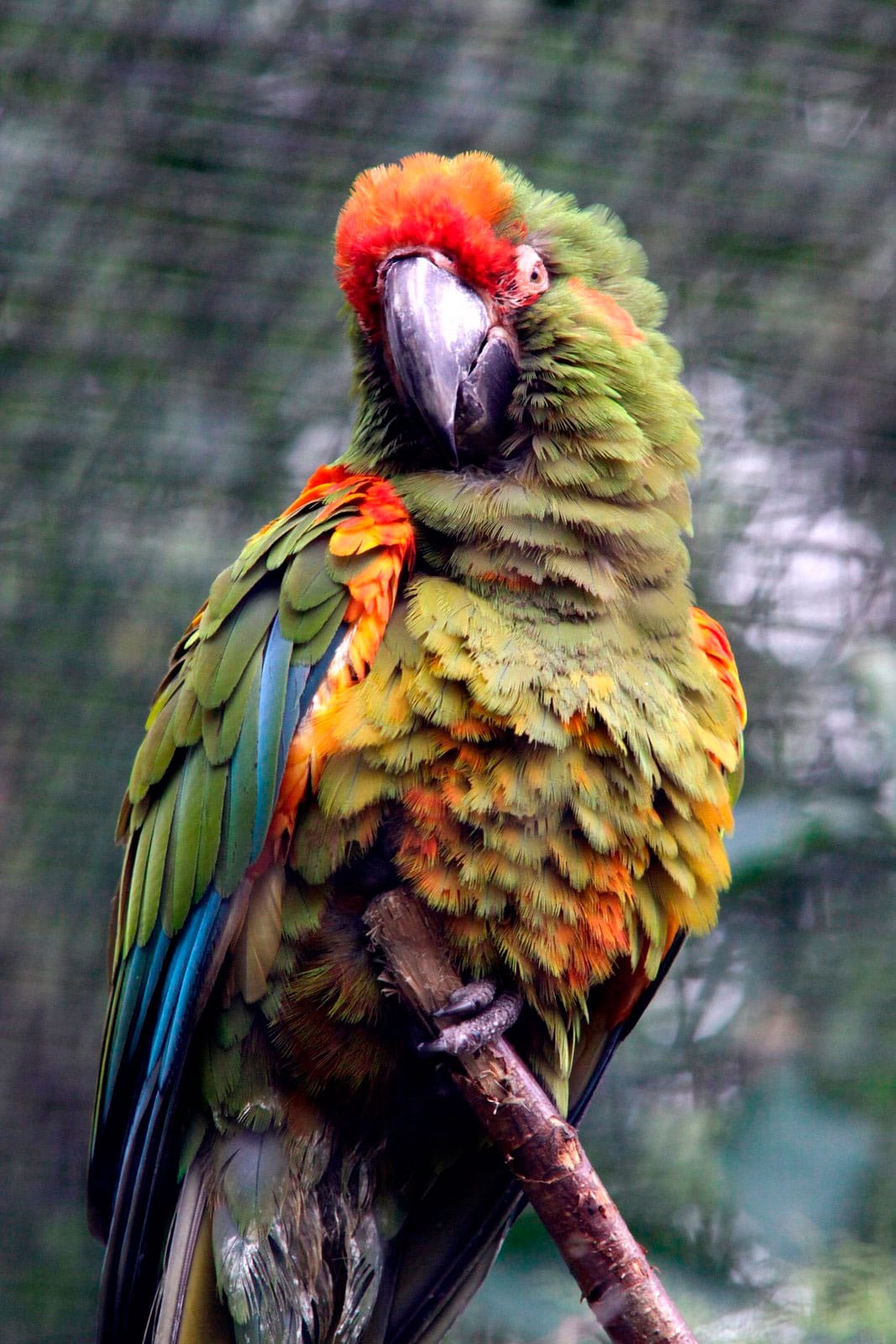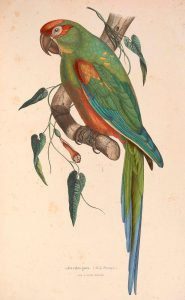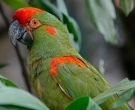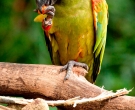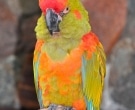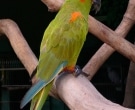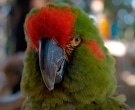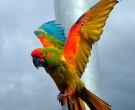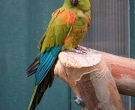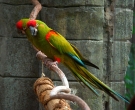Content |
|---|
Description:
Approximately from 55 cm.. length and 525 g. weight.
The Red-fronted Macaw (Ara rubrogenys) they are the smallest of the large macaws.
They have forecrown, former Lords, crown and some ear-coverts bright orange red. back of the crown, nape and the mantle olive green color orange color in some feather-tipped; scapulars color marron-oliva; rump and uppertail-coverts olive green, pale that the of the the mantle. Lesser coverts, bend of wing and carpal edge orange-red; median olive green, some pale orange tips, the outermost impregnated blue; greater coverts mostly blue, back more olive at the body; vane outer primary blue, olive green internal.
Underwing-coverts juvenile red-orange, remaining the rest of green olive beige.
The underparts olive green with the the thighs red. Upper, the the tail feathers color olive green suffusion blue tip blue and; undertail, olive green yellowish.
The bill dark grey; the bare area of the subsequent Lords and upper cheeks, white crossed with narrow lines of dark brown feathers; Orange the irises; perioftalmico ring white; legs dark grey.
Both sexes similar.
Immature more opaque, with less extensive orange-red color in the head and in the ear-coverts and without the orange-red in the wing .
- Sound of the Red-fronted Macaw.
Habitat:
The Red-fronted Macaw It is very selective in searching for its preferred habitat.. It prefers subtropical scrubland areas Xeric or semi-desert with many Cactus (including Cereus, Neocardenasia, Cleistocactus, Echinopsis, Opuntia, Quiabentia and the endemic Lobivia caineana) and areas with scattered trees and shrubs (especially legumes including species Prosopis kuntzei, Acacia aroma, Cnidoscolus and Schinus molle).
Another fundamental characteristic of the habitat of the Red-fronted Macaw they are the steep slopes and coastal cliffs unchanged to that used for nesting and roosting sites.
Often share space with communities of farmers who used the land of valleys with climates mesothermic to plant peanuts, corn and other cereals, the same people who are part of the diet of the Red-fronted Macaw.
They are birds social and rarely stands alone. Are often seen flying in small groups of 3 to 5 individuals. For most activities such as feeding or roosting they congregate in large groups of 20 to 30 individuals. They rest frequently during the middle of the day in the hottest hours. Activity level largely depends on age and number of macaws in the group.
Reproduction:
Observed nests loose or in colonies in ravine holes on the banks of rivers. In rainy season the egg laying It has been reported in the months November-April. They are of 1 to 3 eggs per season, usually two, and incubation lasts around 26 days. Most pairs fledge one young per year..
They form bonds of monogamous they maintain throughout the year. Even in the off-season of breeding, the copula and preening appear exclusively between the consolidated couple, presumably to maintain their bond.
Generally speaking they are not territorial, but during the breeding season You can defend the area surrounding the cavity of the nest.
Food:
The diet of the Red-fronted Macaw It includes various seeds and fruits which include the genera of plants Cenchrus, Tribulus, Cnidoscolus, legumes Prosopis kuntzei, P. juliflora, Prosopis chilensis, trees and shrubs of the genus Aspidosperma, Schinus molle, Ziziphus mistol and Jatropha ricinifolia.
But, natural food is often scarce and birds feed on, to a large extent, of crop plants, especially the peanuts Arachis hypogaea and corn unripened.
Distribution:
Size of the area of distribution (reproduction / resident): 27.100 km2
The Red-fronted Macaw being endemic to a small area in the East of the Andes, in the Center-South of Bolivia, from the South of Cochabamba and West Santa Cruz, passing by Chuquisaca, to the East of potosi, mainly in the valleys of Rio Grande, Mizque and Pilcomayo.
The full range estimate is of 20,000 km², with 18,000 km² in Grand / system of Mizque and 2.000 km² in the valley of the Pilcomayo, between 1.100 and 2.500 m (local after breeding at 3,000m).
They perform many Local movements in response to the availability of food.
Locally common, but declining and endangered at the global level.
Conservation:
• Current Red List of UICN: Danger
• Population trend: Decreasing
The population of the Red-fronted Macaw (Ara rubrogenys) is estimated between 1.000-4.000 individuals, more or less equivalent to a strip between 670-2,700 mature individuals.
This species has a very small population and decreasing. Conservative estimates suggest that all subpopulations are extremely small. So, qualified as endangered.
"Red-fronted Macaw" in captivity:
Uncommon in captivity.
It is an extremely intelligent and curious bird that has the ability to imitate the human voice, despite the fact that the indigenous people of Bolivia refer to them as “Birds donkey”, due to their inability to speak. All skills require a training; holders of these birds breeders give proof of how easy it is to talk.
With regard to its longevity, according to sources, a pair of these macaws still breed after 23 years in captivity. It has been reported that these animals can live up to 36,2 years in captivity, something possible, but that has not been verified; the same study reported that these animals can reproduce at the age of 3 years in captivity.
Due to the few specimens that are released and their situation in danger of extinction, The Red-fronted Macaw only recommended for experienced handlers and breeders.
Alternative names:
– Red-fronted Macaw, Lafresnaye’s Macaw, Red fronted Macaw, Red-cheeked Macaw (English).
– Ara de Lafresnaye, Ara rubrogenys (French).
– Rotohrara (German).
– Arara-de-fronte-vermelha (Portuguese).
– Guacamayo de Cochabamba, Guacamayo Dorado, Guacamaya frente roja (español).
– Paraba frente roja (Bolivia).
– Qaqa Loro (Quechua).
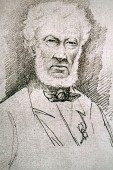
scientific classification:
– Order: Psittaciformes
– Family: Psittacidae
– Genus: ARA
– Scientific name: Ara rubrogenys
– Citation: Lafresnaye, 1847
– Protonimo: Ara Rubro-woodpecker
Images Red-fronted Macaw:
Videos "Red-fronted Macaw"
————————————————————————————————
“Red-fronted Macaw” (Ara rubrogenys)
Sources:
– Avibase
– Parrots of the World – Forshaw Joseph M
– Parrots A Guide to the Parrots of the World – Tony Juniper & Mike Parr
– Birdlife
– Photos:
(1) – Red-fronted Macaw at Berlin Zoological Garden, Germany. Some of the tail feathers are not clean By Konstantinos K [CC BY 2.0], via Wikimedia Commons
(2) – Two Red-fronted Macaws at Tulsa Zoo, Oklahoma, USA By originally posted to Flickr at Tulsa Zoo – Parrots and uploaded to Commons at Ara_rubrogenys_-Tulsa_Zoo,_Oklahoma,_USA-8a.jpg: Doug Wertman from Rogers, AR, USAderivative work: Snowmanradio (Ara_rubrogenys_-Tulsa_Zoo,_Oklahoma,_USA-8a.jpg) [CC BY 2.0], via Wikimedia Commons
(3) – A Red-fronted Macaw at Wilhelma Zoo, Stuttgart, Germany By Kathrin Gaißer (PapageiUploaded by snowmanradio) [CC BY-SA 2.0], via Wikimedia Commons
(4) – A Red-fronted Macaw flying at Doué la Fontaine zoo, France By frank wouters (originally posted to Flickr as papegaai) [CC BY 2.0], via Wikimedia Commons
(5) – Red-fronted Macaw (Ara rubrogenys) head By Benjamin Graves (originally posted to Flickr as Red Fronted Macaw) [CC BY 2.0], via Wikimedia Commons
(6) – Red-fronted Macaw (Ara rubrogenys) on a branch in the foreground By derivative work: Snowmanradio (talk)Red-fronted_Macaw_(Ara_rubrogenys)_-on_branch.jpg: Balaji Dutt M V [CC BY 2.0], via Wikimedia Commons
(7) – Red-fronted Macaw in the Walsrode Bird Park, Germany By Quartl (Own work) [CC BY-SA 3.0], via Wikimedia Commons
(8) – A Red-fronted Macaw at Jurong Bird Park By Peter Tan (Red-fronted MacawUploaded by Snowmanradio) [CC BY-SA 2.0], via Wikimedia Commons
(9) – Red-fronted Macaw – Jurong BirdPark, Singapore By Doug Janson (Own work) [CC BY-SA 3.0 or GFDL], via Wikimedia Commons
(10) – Illustration Ara rubrogenys (Red-fronted Macaw) by Marc Athanase Parfait Oeillet Des Murs [Public domain], via Wikimedia Commons
– Sounds: (Xeno-canto)
